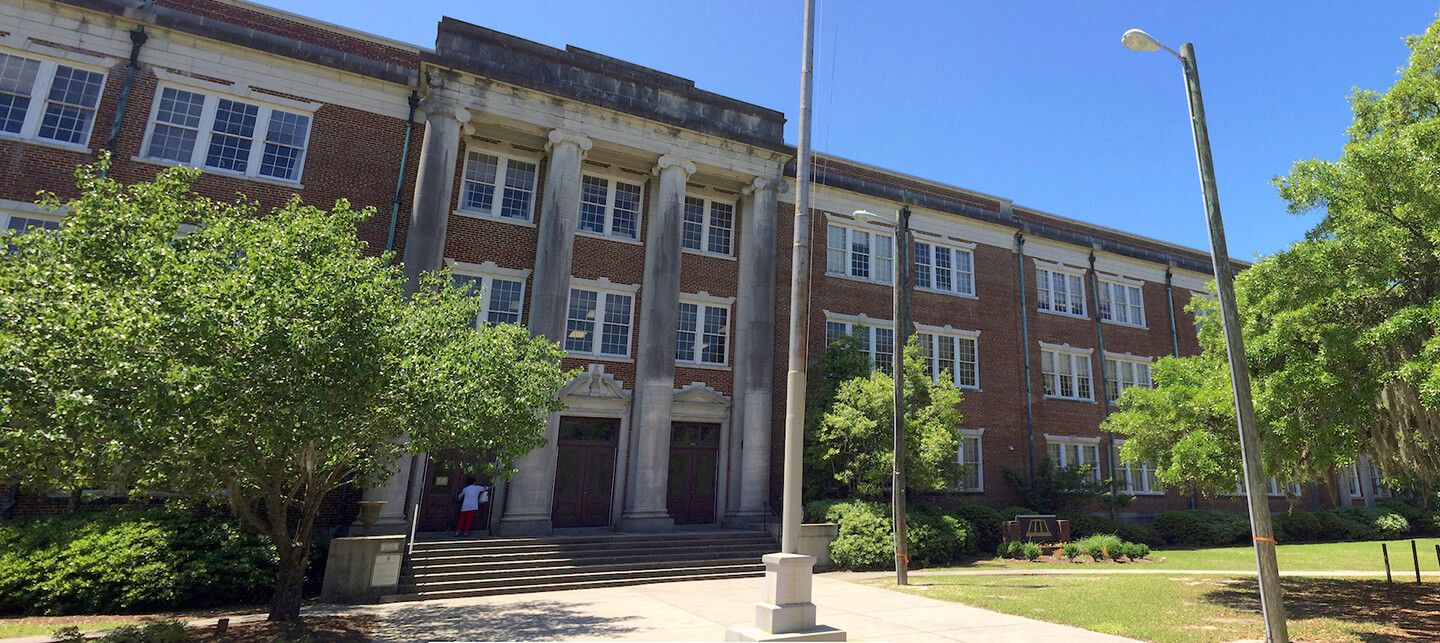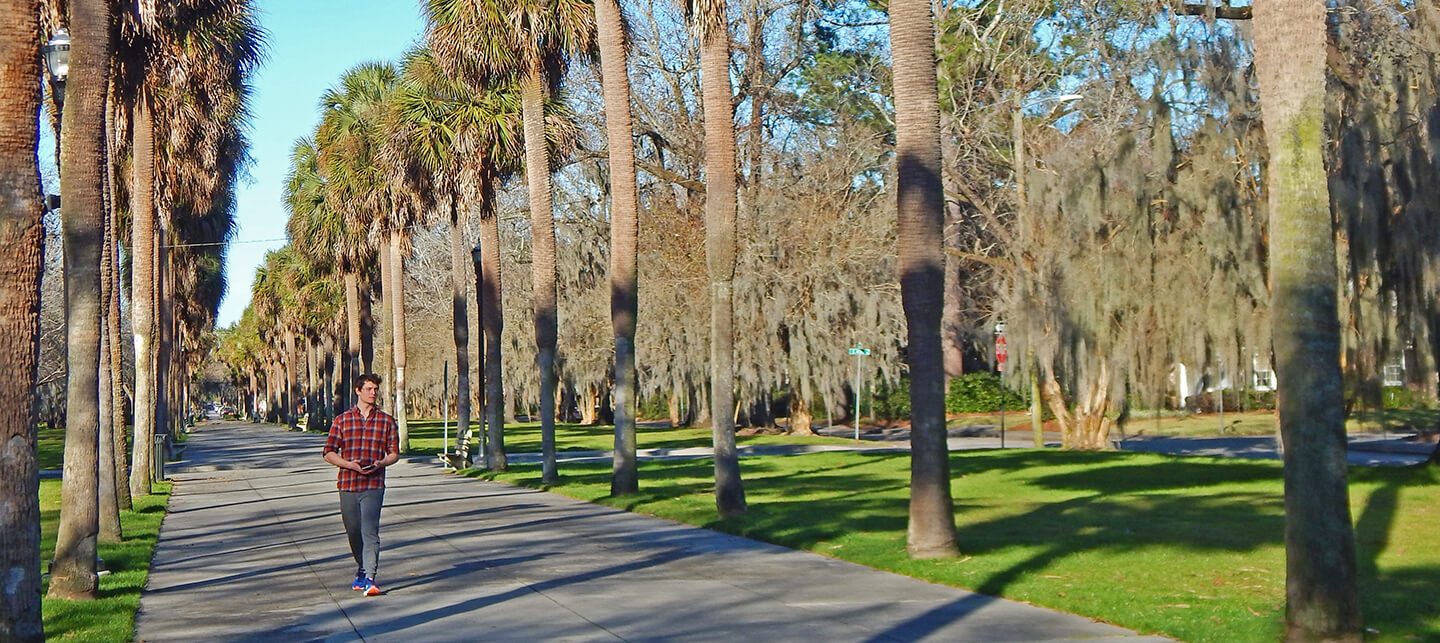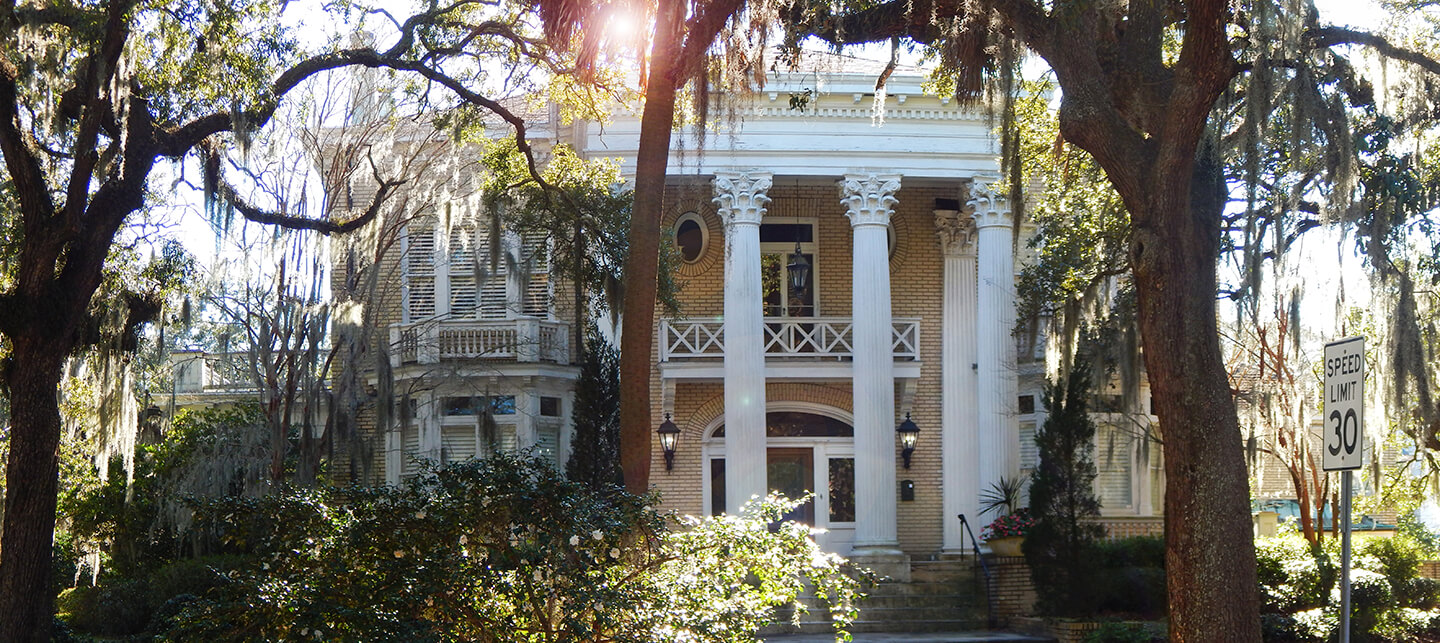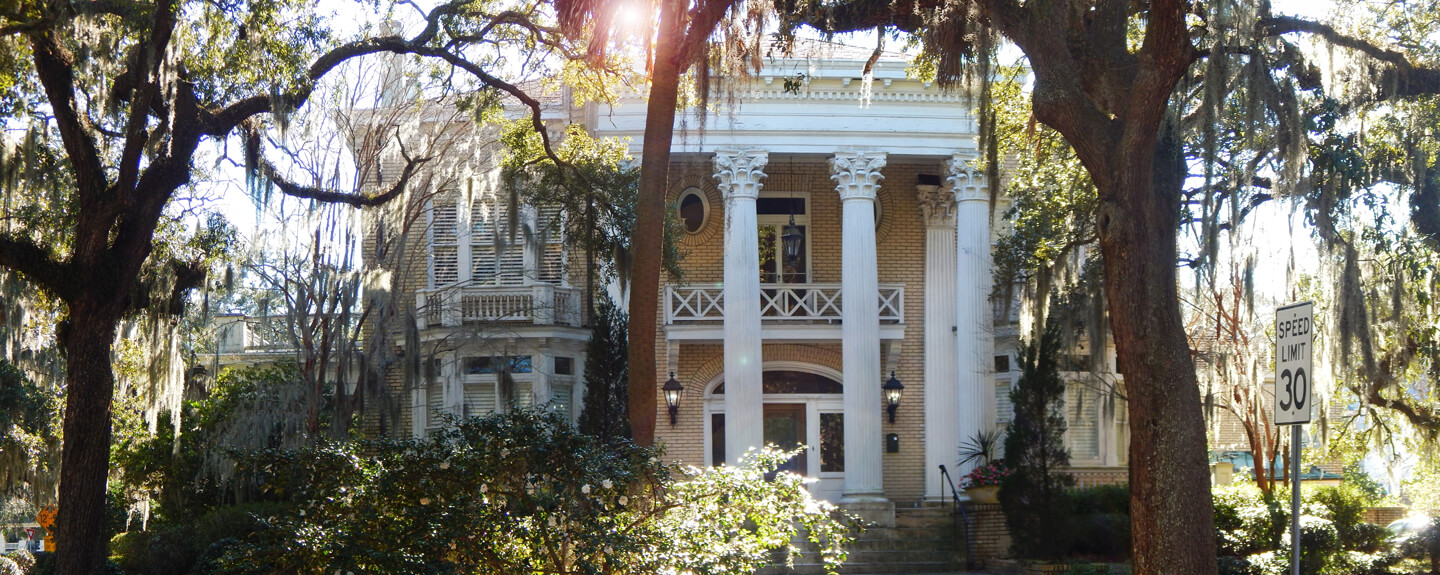
ARDSLEY PARK/CHATHAM CRESCENT
The neighborhood known as Ardsley Park is in fact the result of two planned subdivisions that were laid out in 1909 and 1910. This was a time of great growth and prosperity in Savannah and the handsome, substantial houses of the neighborhood reflect this affluence.
The developers of Ardsley Park, Savannah-natives Harry Hays Lattimore and William Lattimore, laid out the neighborhood according to a strict grid with one-acre landscaped parks placed in regular intervals and offset along the north-south corridor of Abercorn Street. Like Savannah’s downtown squares, these green spaces serve as central parks for some of the neighborhoods finest houses.
Chatham Crescent composes approximately two-thirds of the neighborhood and features a number of interesting city planning and urban features, such as a grand mall, crescent-shaped avenues, and small circular parks set into a grid of streets and lanes that align with the Ardsley Park neighborhood. This street alignment, along with architectural consistency, make the area appear to be one unified development. The area was developed by civic leader Harvey Granger. Henri Bignault, who trained at the Ecole des Beaux Arts in Paris, designed Chatham Crescent, Georgia’s only known example of the City Beautiful movement.

“In addition to the fine architecture of the neighborhood, its landscape and urban design features make it distinctive”
Ardsley Park/Chatham Crescent is noted for its great urban design, solid architectural fabric, and its infrastructure of drainage, sewage, electric and gas lines which were installed by the City of Savannah in exchange for the donation of all parks, streets, street lights, granite curbing, and sidewalks which were provided by the developers.
The Ardsley Park/Chatham Crescent Historic District features many fine houses dating from 1910 through the 1930s. Architectural styles found in the District include Neo-Classical, Colonial Revival, Dutch Colonial, Tudor Revival, Arts and Crafts, Mediterranean, Spanish Revival and Prairie Styles. Many of the houses were designed by notable Savannah architects such as Henrik Wallin, Hyman Witcover, Henry Urban, Olaf Otto, E. Lynn Drummond, Percy Sugden, and John LeBey.
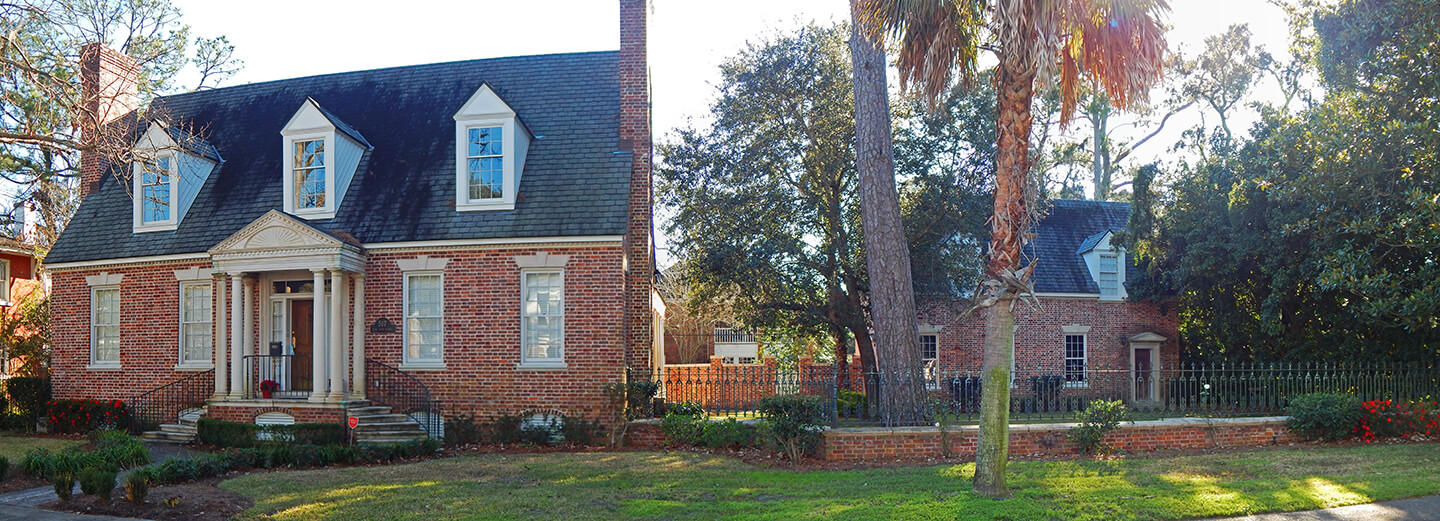
There are several important institutional buildings in the district, most notably the old Savannah High School, which currently serves as the Savannah Arts Academy. This large neo-classical building sits prominently at the southern end of the great mall of Chatham Crescent. This site was originally intended to be occupied by a massive Spanish revival hotel known as the Georgia Hotel. Site work and foundations were begun in 1912, however, construction ceased for more than twenty years. The land was eventually granted to the Board of Education to make way for Savannah High School, which was constructed in 1935 as part of the Works Progress Administration (WPA). The present Charles Ellis School opened as the 49th Street School in 1929 and remains a community landmark today.
Other noteworthy institutional buildings in Ardsley Park/Chatham Crescent are two mid-century churches: Blessed Sacrament Catholic Church, built in 1950, and First Presbyterian Church, constructed in 1956.
In addition to the fine architecture of the neighborhood, its landscape and urban design features make it distinctive. Due to the historic district’s construction after the advent of the automobile, auto garages built on lanes, rounded parks, and other features contribute to its livability. Street trees are abundant and lush azaleas, along with other large shrubs, decorate the neighborhoods, private lanes, and public spaces.
